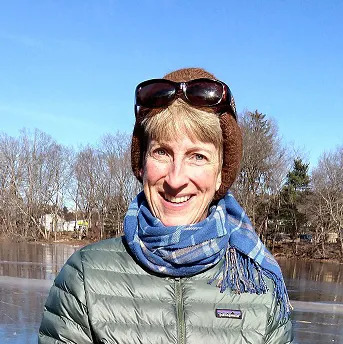Interview With Mary Evans of Pediatric Physical Therapy

Mary Evans, PT, DPT, MS is a physical therapist at the Emerson Hospital Clough Center for Rehabilitation and Sports Therapies. There she is supervisor of the pediatric service line, including the Emerson Scoliosis Clinic. She treats a wide variety of pediatric patients with a focus on scoliosis.
Note: You should consult with your doctor or physical therapist for recommendations on treatment. The views and opinions expressed in this article are those of Dr. Evans and do not necessarily reflect the official policy or position of OnlinePhysicalTherapyPrograms.com
What inspired you to start your blog?
I found that I was educating parents on the same areas. This was a way for me to refer them to the blog to read on their own time. I let them know that we would discuss the topic at our next therapy session. We all need to hear something more than once, learn by different methods, and we are motivated in different ways. I feel my blog addresses these factors.
How did you become interested in pediatric physical therapy?
I was an active teenager and I loved science, my sister suggested physical therapy as a way to take advantage of both these traits.
What do you hope your readers get out of the information you share with them?
I hope my readers reach a greater understanding of their child, and feel empowered and supported to take the next step.
What are the challenges to ensuring that children get the physical therapy care they need as soon as possible?
There is so much misinformation on the internet, which can lead parents in inappropriate directions; wasting their time. We have focused on building relationships with area pediatricians, and having timely communication about the patients they refer to us. We want to ensure that they are an integral part of the rehab team.
What do you wish parents of children with physical disabilities knew?
That their child is differently-abled, and as parents they will be part of a community of people who will have a special perspective on life. To that end, it is important for parents to network and find people who will support them in their journey.
You have blogged a few times about scoliosis over the past year or so. How can PT improve outcomes for scoliosis patients?
There is a need for physical therapy education to catch up with the research in this field. Scoliosis patients, whether pediatric or adult, should only be treated with scoliosis specific exercises by a physical therapist who has advanced their own knowledge in this area. The outcomes for this population are dramatically different than they were even 5 and 10 years ago. We now are reducing scoliosis curves with physical therapy and bracing, something we only dreamed about. Early detection in the beginning stages of their preadolescent growth spurt is key. For girls, that is 10-14 year olds, for boys, it is 12-16 years of age. At Emerson Hospital, our non-operative, team based approach to Scoliosis is yielding excellent results.
How can new PTs stay up to date on the latest evidence?
By joining the APTA and staying current with research. Attending conferences is important throughout your career as a physical therapist. This will ensure that you are learning about the latest evidence-based practices.
Do you have any advice for PT students?
Find a college or university situation that will not leave you with significant debt. Some therapists take time between undergrad and grad school to work and build up a fund for grad school. Some live at home and commute. Some find entry level programs give the most scholarship money and move them through with faster options. This is a great career path, I have done adult in-patient rehab, home care, private practice, Early Intervention and now outpatient pediatrics. Develop an area of interest and specialize, while keeping your mind open to possibilities; whether that be the practice setting or the patient population. You can always reinvent yourself.

